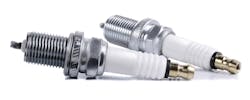Plug-and-play IIoT
Earlier this week we shared the news that The HiveMQ MQTT platform has been certified as fully Sparkplug compliant and aware to support Industry 4.0 initiatives. (Read that release here.) We wanted to learn more, so we connected with Ravi Subramanyan, director of industry solutions at HiveMQ and member of the Sparkplug Working Group. Take a look…
Smart Industry: Describe the new updates to Sparkplug.
Ravi: On a high level, the new Sparkplug 3.0 specification includes cleanup and formalization of the previous release. The primary goal was to clarify ambiguities while maintaining the general intent of the v2.2 specification. Even though not much new has been specified, the new specification has straightened out a bunch of topics and worked them out much more stringently and comprehensively.
A real gain is the capability to validate and check the Sparkplug compatibility of products. This is a real added value not only for manufacturers, but also for end-users.
Smart Industry: What new capability with version 3.0 most excites you?
Ravi: At HiveMQ we’re excited about two things—the ability to be validated as “Sparkplug Compatible” via the new program, and the fact that the new spec distinguishes between a “Sparkplug Compliant MQTT Server” and a “Sparkplug Aware MQTT Server,” which gives us another way to differentiate and show the market we are fully committed to Sparkplug. The HiveMQ MQTT Broker is both Sparkplug compliant and aware, but not all products will achieve this level of compatibility, so it really sets us apart.
Let's take a quick look at the difference between the two.
A Sparkplug-compliant MQTT server must support the following:
- Publish and subscribe on QoS 0
- Publish and subscribe on QoS 1
- All aspects of Will Messages including the use of the retain flag and QoS 1
- All aspects of the retain flag
Whereas a Sparkplug-aware MQTT server includes all of the aspects of a Sparkplug-compliant MQTT server and must have the following additional abilities:
- Store NBIRTH and DBIRTH messages as they pass through the MQTT server
- Make NBIRTH and DBIRTH messages available on a topic of the form
So, a Sparkplug-aware MQTT server extends the state management approach of Sparkplug. In a nutshell, birth and death certificates are now stored as retained messages made available at the newly introduced topic structure.
Smart Industry: How will this updated version of Sparkplug change IIoT / the digitalization of manufacturing?
Ravi: Sparkplug provides OT data with context so it can be seamlessly integrated with enterprise systems in a bi-directional way, and the latest Sparkplug updates will advance adoption of these standards across the globe for more successful, interoperable IIoT deployments that enable digital transformation. Overall, what we’re aiming for is plug-and-play IIoT. There are so many protocols, so many types of data producers and consumers, and companies need solutions that just work. Sparplug 3.0 will help us get there.
